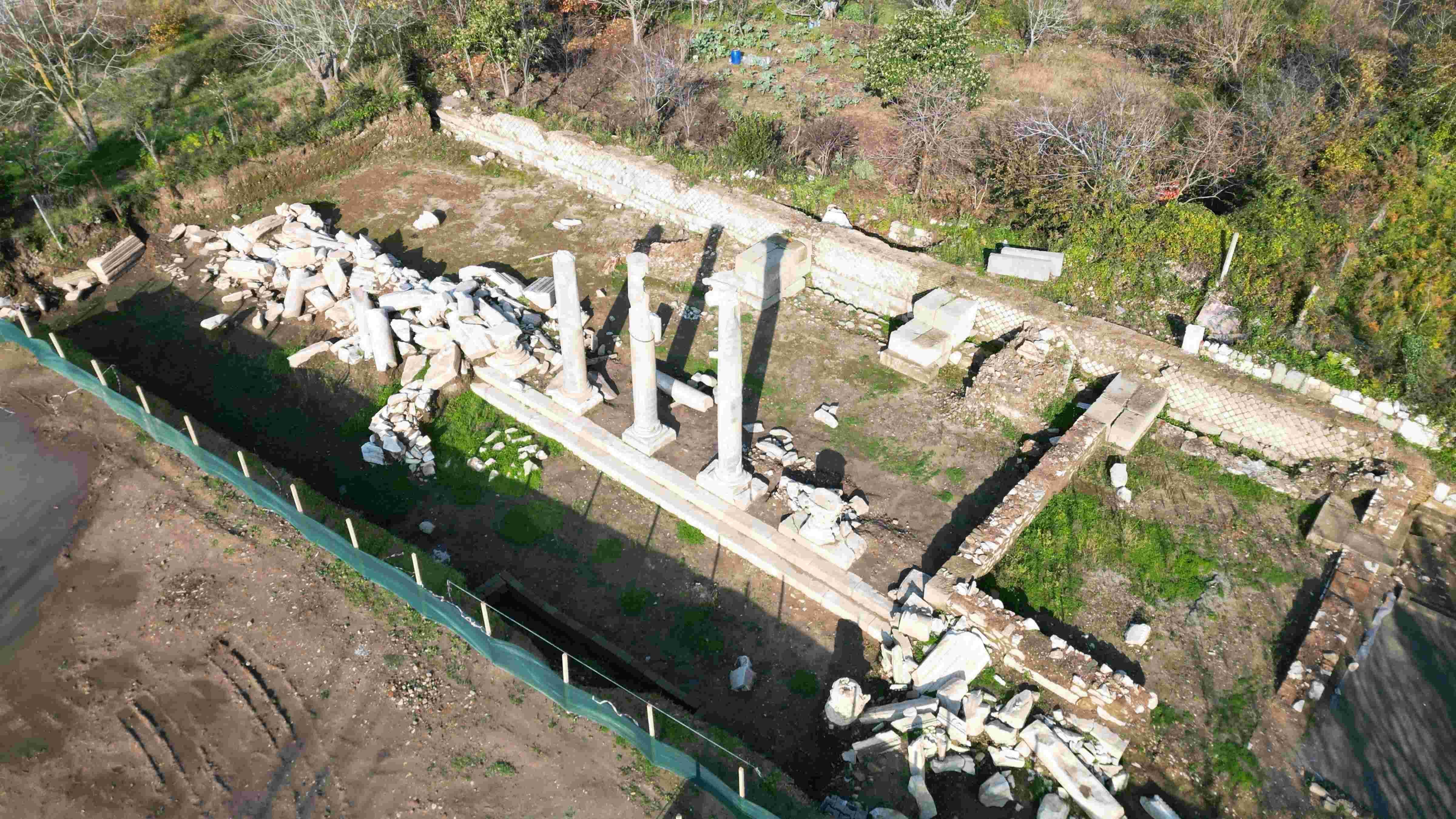
Restoration work is being carried out to restore an approximately 2,000-year-old stoa structure (colonnaded gallery) from the Roman period, located in the ancient city of Amastris in the northern province of Bartın's Amasra district.
Examinations of artifacts uncovered during rescue excavations initiated two years ago by Bartın University (BARÜ) revealed that the district had been home to magnificent structures during ancient times.
A Roman-era stoa structure, featuring marble columns reaching up to nine meters high, was identified in the excavation conducted over an area of 2,850 square meters under the leadership of Professor Fatma Bağdatlı Çam, the director of BARU's Archaeology Application and Research Center. The structure, built in the Corinthian order (a classical architectural style), is being restored to its original state using its authentic components.
The restoration work, supported by Turkish Petroleum Corporation (TPAO), is being carried out by lecturers, students and volunteers from BARU as well as Istanbul, Denizli Pamukkale, Van Yüzüncü Yıl, Mimar Sinan Fine Arts, Karamanoğlu Mehmet Bey and Malatya İnönü universities.
Blocks, ceiling coffers and architectural fragments belonging to the structure, much of which remains underground, are being unearthed during works.
So far, three columns have been raised using the Anastylosis technique — a restoration method that reconstructs structures piece by piece using their original components. When completed, the restoration of this grand structure as a Roman stoa is expected to transform it into a major tourist attraction.
Çam stated that the stoa structure was discovered during excavations that began in 2022 in the area where historical remains were uncovered during school construction in Kum Neighborhood in 2017, leading to its designation as a protected site.
Noting that the restoration work is ongoing, Çam said: "We have completed works to raise three columns. During this process, we based our work on three bases located in the eastern part of the structure and the architectural fragments here were placed in a display area. This gave us a visual idea of what the structure would look like once restored. The monumental nature of the structure became evident with the raised columns. The restoration project will continue next year with the full exposure of the site and the structure."
Çam emphasized that the structure is the most monumental marble structure in the Black Sea region and reflects the grandeur of the ancient city.
The ancient city founded by Queen Amastris
Highlighting that the ancient city featured an agora (city square) surrounded by stoa structures, Çam said, "This shows us that Amastris possessed monumental structures of great aesthetic appeal, particularly during the Roman era. The Corinthian order, column capitals and architectural decorations of the uncovered structure reveal that the monumental architecture seen in Mediterranean and Aegean cities such as Ephesus, Aphrodisias, Perge and Side was also present in Amastris, a small port city on the Black Sea coast."
"The structure's dimensions and architectural embellishments establish it as the unique stoa structure in the Black Sea region. This structure will contribute to tourism in Amasra and the Western Black Sea region. With the completion of the excavations and restorations, as well as the designation of these areas as archaeological sites, Amasra will become a more popular and attractive destination for the Black Sea region. Another important aspect is its contribution to Amasra's long-time candidacy process for UNESCO World Heritage status. We are witnessing the revival of this ancient city founded by Queen Amastris after centuries," Çam added.
Çam also noted that during earlier excavations, artifacts such as a bust of Alexander the Great, statues of Nymphs (water deities) and Lares (household gods), amulets, coins and inscriptions from various periods were found.
Bartın University Rector Professor Orhan Uzun expressed his satisfaction that one of the region's most significant archaeological works is being conducted under the auspices of their university.